A New Compound Staged Gelling Acid Fracturing Method for Ultra-Deep Horizontal Wells
Abstract
1. Introduction
2. Results and Discussion
2.1. Optimal Fracture Parameters of Acid Fracturing for Horizontal Wells
2.2. Packer + Temporary Plugging
2.3. Acid Fracturing Technology for the Ultra-Deep Reservoir
2.4. Field Application
3. Conclusions
Author Contributions
Funding
Data Availability Statement
Conflicts of Interest
References
- Ma, X.; Yan, H.; Chen, J. Development patterns and constraints of superimposed karst reservoirs in Sinian Dengying Formation, Anyue gas field, Sichuan Basin. Oil Gas Geol. 2021, 42, 1281–1294. [Google Scholar]
- Wang, K.; Teng, J.; Deng, H.; Fu, M.; Lu, H. Classification of Void Space Types in Fractured-Vuggy Carbonate Reservoir Using Geophysical Logging: A Case Study on the Sinian Dengying Formation of the Sichuan Basin, Southwest China. Energies 2021, 14, 5087. [Google Scholar] [CrossRef]
- Xie, J. Innovation and practice of key technologies for the efficient development of the supergiant Anyue Gas Field. Nat. Gas Ind. B 2020, 7, 337–347. [Google Scholar] [CrossRef]
- Li, S.; Ma, H.; Zhang, H.; Ye, J.; Han, H. Study on the acid fracturing technology for high-inclination wells and horizontal wells of the Sinian system gas reservoir in the Sichuan Basin. J. Southwest Pet. Univ. 2018, 40, 146. [Google Scholar]
- Hu, Y.; Peng, X.; Li, Q.; Li, L.; Hu, D. Progress and development direction of technologies for deep marine carbonate gas reservoirs in the Sichuan Basin. Nat. Gas Ind. B 2020, 7, 149–159. [Google Scholar] [CrossRef]
- Mi, Q.; Yi, X.; Luo, P.; Ren, L. Horizontal well staged fracturing technology of tight sandstone reservoirs with super depth in Tazhong Area. J. Southwest Pet. Univ. 2015, 37, 114. [Google Scholar]
- Chen, Z.; Wang, Z.; Zeng, H. Status quo and prospect of staged fracturing technique in horizontal wells. Nat. Gas Ind. 2007, 27, 78. [Google Scholar]
- Zhang, H.; Liu, Z.; Cheng, Z.; Tian, W.; Zhang, P.; Han, Y. Research on open hole packer of staged fracturing technique in horizontal wells and its application. Oil Drill. Prod. Technol. 2011, 33, 123–125. [Google Scholar]
- Haishan, Y.; Jian, W.; Cuo, W. Horizontal Well Fracturing Technology Progress of Putaohua Reservoir in Daqing Peripheral Oilfield. Reserv. Eval. Dev. 2013, 3, 51–56. [Google Scholar]
- Zou, G.; Che, M.; Ji, X. Multi-stage fracturing technology and application for ultra-high pressure fractured gas reservoir. Nat. Gas Geosci. 2012, 23, 365–369. [Google Scholar]
- Chu, X.; Wu, J.; Duan, P.; Li, W.; Liang, C.; Liu, L. Application of fracturing technique combining hydraulic Jet with small-diameter packer on horizontal wells in Changqing low-permeability Oilfield. Oil Drill. Prod. Technol. 2013, 34, 73–76. [Google Scholar]
- Liu, J.; Lian, Z.; Lin, T. Production forecasting formulas of horizontal wells under multiform completions. Spec. Oil Gas Reserv. 2006, 13, 61–63. [Google Scholar]
- Hui, X.; Jianchun, G.; Jun, Z. Technical study on staged acid fracturing of horizontal well in fractured-cavernous carbonate reservoir. Fault-Block Oil Gas Field 2011, 18, 119–122. [Google Scholar]
- Chunming, H.; Feng, H.; Zhe, L. Research on Acid Fracturing Technology of Horizontal Section of the Deep Marine Carbonate Reservoir. Well Test. 2013, 22, 5–9. [Google Scholar]
- Babu, D.K.; Odeh, A.S. Productivity of a horizontal well appendices A and B. In Proceedings of the SPE Annual Technical Conference and Exhibition, Houston, TX, USA, 2–5 October 1988; Society of Petroleum Engineers (SPE): Aberdeen, UK, 1988. [Google Scholar]
- Hegre, T.M.; Larsen, L. Productivity of multifractured horizontal wells. In Proceedings of the European Petroleum Conference, Aberdeen, UK, 15–17 March 1994; Society of Petroleum Engineers (SPE): Aberdeen, UK, 1994. [Google Scholar]
- Elgaghah, S.A.; Osisanya, S.O.; Tiab, D. A simple productivity equation for horizontal wells based on drainage area concept. In Proceedings of the SPE Western Regional Meeting, Anchorage, AK, USA, 22 May 1996; Society of Petroleum Engineers (SPE): Aberdeen, UK, 1996. [Google Scholar]
- Giger, F.M. Horizontal wells production techniques in heterogeneous reservoirs. In Proceedings of the Middle East Oil Technical Conference and Exhibition, Manama, Bahrain, 11 March 1985; Society of Petroleum Engineers (SPE): Aberdeen, UK, 1985. [Google Scholar]
- Mukherjee, H.; Economides, M.J. A parametric comparison of horizontal and vertical performance. SPE Form. Eval. 1996, 6, 209–216. [Google Scholar] [CrossRef]
- He, Y.; Li, Y.M.; Zhao, J.Z.; Zhang, Y.; Lin, T.; Mi, Q.B. Productivity-Prediction Model of Acid Fracturing Horizontal Well in Fracture-Cavity Reservoir. In Applied Mechanics and Materials; Trans Tech Publications Ltd.: Freienbach, Switzerland, 2013; Volume 321, pp. 872–876. [Google Scholar]
- Wang, Y.; Zhou, C.; Yi, X.; Li, L.; Chen, W.; Han, X. Technology and Application of Segmented Temporary Plugging Acid Fracturing in Highly Deviated Wells in Ultradeep Carbonate Reservoirs in Southwest China. ACS Omega 2020, 5, 25009–25015. [Google Scholar] [CrossRef]
- Wang, Y.; Zhou, C.; Yi, X.; Li, L.; Zhou, J.; Han, X.; Gao, Y. Research and Evaluation of a New Autogenic Acid System Suitable for Acid Fracturing of a High-Temperature Reservoir. ACS Omega 2020, 5, 20734–20738. [Google Scholar] [CrossRef]
- Li, N.; Dai, J.; Liu, P.; Luo, Z.; Zhao, L. Experimental study on influencing factors of acid-fracturing effect for carbonate reservoirs. Petroleum 2015, 1, 146–153. [Google Scholar] [CrossRef]
- Settari, A. Modeling of acid-fracturing treatments. SPE Prod. Facil. 1993, 8, 30–38. [Google Scholar] [CrossRef]
- Rencheng, D.; Mary, F.W. Modeling Acid Fracturing Treatments with Multi-Stage Alternating Injection of Pad and Acid Fluids. In Proceedings of the 2021 SPE Reservoir Simulation Conference, online, 19 October 2021; SPE-203985-MS. Society of Petroleum Engineers: Aberdeen, UK, 2021. [Google Scholar] [CrossRef]
- Jackson, S.J.; Power, H.; Giddings, D. Immiscible Thermo-Viscous Fingering in Hele-Shaw cells. Comput. Fluids 2017, 156, 621–641. [Google Scholar] [CrossRef][Green Version]
- Nguyen, V.T.; Park, W.G. A volume-of-fluid (VOF) interface-sharpening method for two-phase incompressible flows. Comput. Fluids 2017, 152, 104–119. [Google Scholar] [CrossRef]
- Xu, H.; Cheng, J.; Zhao, Z.; Lin, T.; Liu, G.; Chen, S. Coupled thermo-hydro-mechanical-chemical modeling on acid fracturing in carbonatite geothermal reservoirs containing a heterogeneous fracture. Renew. Energy 2021, 172, 145–157. [Google Scholar] [CrossRef]
- You, J.; Lee, K.J. Analyzing the Dynamics of Mineral Dissolution during Acid Fracturing by Pore-Scale Modeling of Acid-Rock Interaction. SPE J. 2021, 26, 639–652. [Google Scholar] [CrossRef]
- Mehrjoo, H.; Norouzi-Apourvari, S.; Jalalifar, H.; Shajari, M. Experimental study and modeling of final fracture conductivity during acid fracturing. J. Pet. Sci. Eng. 2022, 208, 109192. [Google Scholar] [CrossRef]
- Xu, P.; Sheng, M.; Lin, T.; Liu, Q.; Wang, X.; Khan, W.A.; Xu, Q. Influences of rock microstructure on acid dissolution at a dolomite surface. Geothermics 2022, 100, 102324. [Google Scholar] [CrossRef]
- Wang, D.; Ge, H.; Wang, X.; Wang, Y.; Sun, D.; Yu, B. Complex Fracture Closure Pressure Analysis During Shut-in: A Numerical Study. Energy Explor. Exploit. 2022, 01445987221077311. [Google Scholar] [CrossRef]
- Wang, Y.; Fan, Y.; Zhou, C.; Luo, Z.; Chen, W.; He, T.; Fang, H.; Fu, Y. Research and Application of Segmented Acid Fracturing by Temporary Plugging in Ultradeep Carbonate Reservoirs. ACS Omega 2021, 6, 28620–28629. [Google Scholar] [CrossRef]
- McNeil, F.; van Gijtenbeek, K.; Van Domelen, M. New hydraulic fracturing process enables far-field diversion in unconventional reservoirs. In Proceedings of the SPE/EAGE European Unconventional Resources Conference & Exhibition-From Potential to Production, Vienna, Austria, 20–22 March 2012. cp-285-00049. [Google Scholar] [CrossRef]
- Bulova, M.N.; Nosova, K.E.; Willberg, D.M.; Lassek, J.T. Benefits of the novel fiber-laden low-viscosity fluid system in fracturing low-permeability tight gas formations. In Proceedings of the SPE Annual Technical Conference and Exhibition, Vienna, Austria, 20–22 March 2012; Society of Petroleum Engineers (SPE): Aberdeen, UK, 2006. [Google Scholar]
- Yuan, L.; Zhou, F.; Li, B.; Gao, J.; Yang, X.; Cheng, J.; Wang, J. Experimental study on the effect of fracture surface morphology on plugging efficiency during temporary plugging and diverting fracturing. J. Nat. Gas Sci. Eng. 2020, 81, 103459. [Google Scholar] [CrossRef]
- Zhang, L.; Zhou, F.; Mou, J.; Pournik, M.; Tao, S.; Wang, D.; Wang, Y. Large-scale true tri-axial fracturing experimental investigation on diversion behavior of fiber using 3D printing model of rock formation. J. Pet. Sci. Eng. 2019, 181, 106171. [Google Scholar] [CrossRef]
- Anup, V.; Hunter, W.; Jennifer, R.; Andrew, C.; Brian, S. Sequenced fracture treatment diversion enhances horizontal well completions in the Eagle Ford Shale. In Proceedings of the SPE/CSUR Unconventional Resources Conference, Calgary, AB, Canada, 30 September–2 October 2014; Society of Petroleum Engineers (SPE): Aberdeen, UK, 2014. [Google Scholar]
- Fry, J.; Roach, E.; Kreyche, B.; Yenne, T.; Geoffrey, G.; Jespersen, M. Improving Hydrocarbon Recovery in Sliding Sleeve Completions Utilizing Diverters in the Wattenberg Field. In Proceedings of the SPE Hydraulic Fracturing Technology Conference, The Woodlands, TX, USA, 9–11 February 2016; Society of Petroleum Engineers (SPE): Aberdeen, UK, 2016. [Google Scholar]
- Barraza, J.; Capderou, C.; Jones, M.C.; Lannen, C.T.; Singh, A.K.; Shahri, M.P.; Babey, A.G.; Koop, C.D.; Rahuma, A.M. Increased cluster efficiency and fracture network complexity using degradable diverter particulates to increase production: Permian Basin Wolfcamp shale case study. In Proceedings of the SPE Annual Technical Conference and Exhibition, San Antonio, TX, USA, 9–11 October 2017; Society of Petroleum Engineers (SPE): Aberdeen, UK, 2017. [Google Scholar]
- Senters, C.W.; Leonard, R.S.; Ramos, C.R.; Wood, T.M.; Woodroof, R.A. Diversion-Be Careful What You Ask For. In Proceedings of the SPE Annual Technical Conference and Exhibition, San Antonio, TX, USA, 9–11 October 2017; Society of Petroleum Engineers (SPE): Aberdeen, UK, 2017. [Google Scholar]
- Zhou, F.; Yang, X.; Xiong, C.; Zhang, S.; Zong, Y.; Sun, L.; Guan, Z. Application and study of fine-silty sand control technique for unconsolidation quaternary sand gas reservoir, Sebei Qinghai. In Proceedings of the SPE International Symposium and Exhibition on Formation Damage Control, Lafayette, LA, USA, 18–20 February 2004; Society of Petroleum Engineers (SPE): Aberdeen, UK, 2004. [Google Scholar]
- Wang, D.; Dong, Y.; Sun, D.; Yu, B. A three-dimensional numerical study of hydraulic fracturing with degradable diverting materials via CZM-based FEM. Eng. Fract. Mech. 2020, 237, 107251. [Google Scholar] [CrossRef]
- Wang, M.; Wang, J.; Cheng, F.; Chen, X.; Yang, X.; Lv, W.; Wang, B. Diverter plugging pattern at the fracture mouth during temporary plugging and diverting fracturing: An experimental study. Energy Rep. 2022, 8, 3549–3558. [Google Scholar] [CrossRef]
- Yang, C.; Feng, W.; Zhou, F. Formation of temporary plugging in acid-etched fracture with degradable diverters. J. Pet. Sci. Eng. 2020, 194, 107535. [Google Scholar] [CrossRef]
- Baiyu, Z.; Hongming, T.; Senlin, Y.; Gongyang, C.; Feng, Z.; Ling, L. Experimental and numerical investigations of particle plugging in fracture-vuggy reservoir: A case study. J. Pet. Sci. Eng. 2022, 208, 109610. [Google Scholar] [CrossRef]
- Wang, Y.; Zhou, C.; Zhang, H.; He, T.; Tang, X.; Peng, H.; Fang, H.; Luo, L.; Gang, S. Research and Application of Segmented Acid Fracturing Technology in Horizontal Wells of Ultra-deep Carbonate Gas Reservoirs in Southwest China. In Proceedings of the International Petroleum Technology Conference, online, 23 March–1 April 2021; Society of Petroleum Engineers (SPE): Aberdeen, UK, 2021. [Google Scholar]
- Yue, J.; Duan, Y.; Qing, S.; Qing, P.; Liu, X. Study on productivity performances of horizontal fractured gas well with many vertical fractures. Pet. Geol. Oilfield Dev. Daqing 2004, 23, 46–48. [Google Scholar]
- Yan, X.Y.; Hu, Y.Q.; Zhao, J.Z.; Shen, B.B. Production Simulate Analysis of Multiple-Fractured Horizontal Gas Wells. In Advanced Materials Research; Trans Tech Publications Ltd.: Freienbach, Switzerland, 2012; Volume 402, pp. 728–733. [Google Scholar]
- Guo, J.; Gou, B.; Qin, N.; Zhao, J.; Wu, L.; Wang, K.; Ren, J. An innovative concept on deep carbonate reservoir stimulation: Three-dimensional acid fracturing technology. Nat. Gas Ind. B 2020, 7, 484–497. [Google Scholar] [CrossRef]
- Miao, W.J.; Zhao, L. Development Status and Prospect of Staged Fracturing Technology in Horizontal Wells. Electron. J. Geotech. Eng. 2017, 22. [Google Scholar]
- Al-Qahtani, M.Y.; Zillur, R. Optimization of acid fracturing program in the Khuff gas condensate reservoir of south Ghawar field Saudi Arabia by managing uncertainties using state-of-the-art technology. In Proceedings of the SPE Annual Technical Conference and Exhibition, New Orleans, LA, USA, 30 September–2 October 2001; Society of Petroleum Engineers (SPE): Aberdeen, UK, 2001. [Google Scholar]
- Lei, Q.; Xu, Y.; Yang, Z.; Cai, B.; Wang, X.; Zhou, L.; Liu, H.; Xu, M.; Wang, L.; Li, S. Progress and development directions of stimulation techniques for ultra-deep oil and gas reservoirs. Pet. Explor. Dev. 2021, 48, 221–231. [Google Scholar] [CrossRef]
- Li, G.; Sheng, M.; Tian, S.; Huang, Z.; Li, Y.; Yuan, X. Multistage hydraulic jet acid fracturing technique for horizontal wells. Pet. Explor. Dev. 2012, 39, 107–112. [Google Scholar]
- Yang, W.; Bing, Z.; Qingyun, Y. Integrated techniques in tight reservoir development for horizontal wells in Block Shun 9. Pet. Drill. Tech. 2015, 43, 48–52. [Google Scholar]
- Wang, T.; Zhao, B.; Qu, Z. Temporarily plugging and acid-fracturing technology in weak channels near wellbore region in Tahe Oilfield. Fault-Block Oil Gas Field 2019, 26, 794–799. [Google Scholar]
- Qu, Z.; Lin, Q.; Guo, T. Experimental study on acid fracture conductivity of carbonate rock in Shunbei Oilfield. Fault-Block Oil Gas Field 2019, 26, 533–536. [Google Scholar]
- Li, X.; Yang, Z.; Chen, R. Study on the physical model and fractal of the acid solution in the pre-liquid acid fracturing seam. J. Southwest Pet. Univ. 2007, 29, 105–108. [Google Scholar]
- Wu, H.; Kong, C.; Yi, X.; Zhang, H.; Liu, H.; Wu, Y. Numerical analysis of acid-corroded wormholes in fractured carbonate rocks. Drill. Fluid Completion Fluid 2016, 33, 105–108. [Google Scholar]
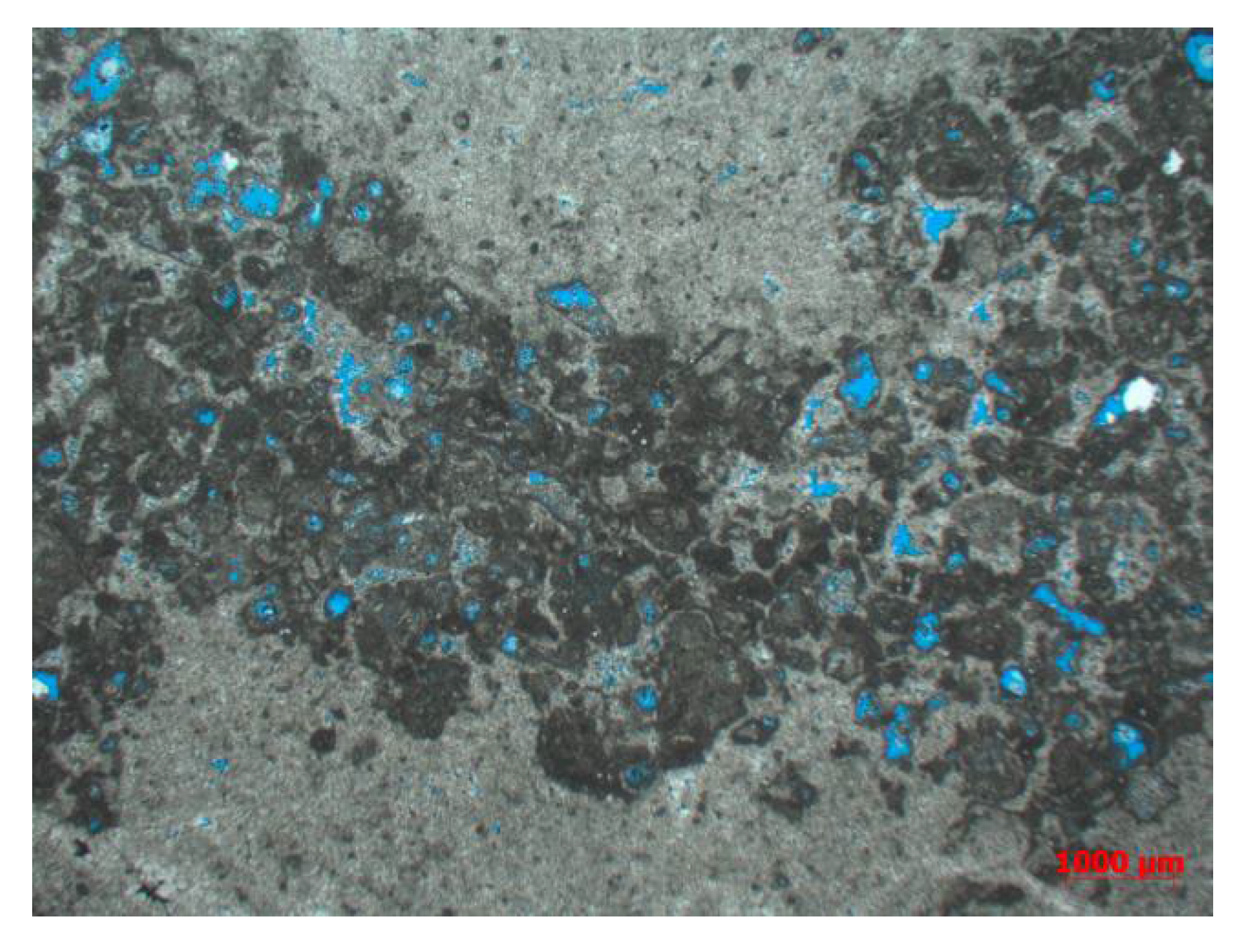

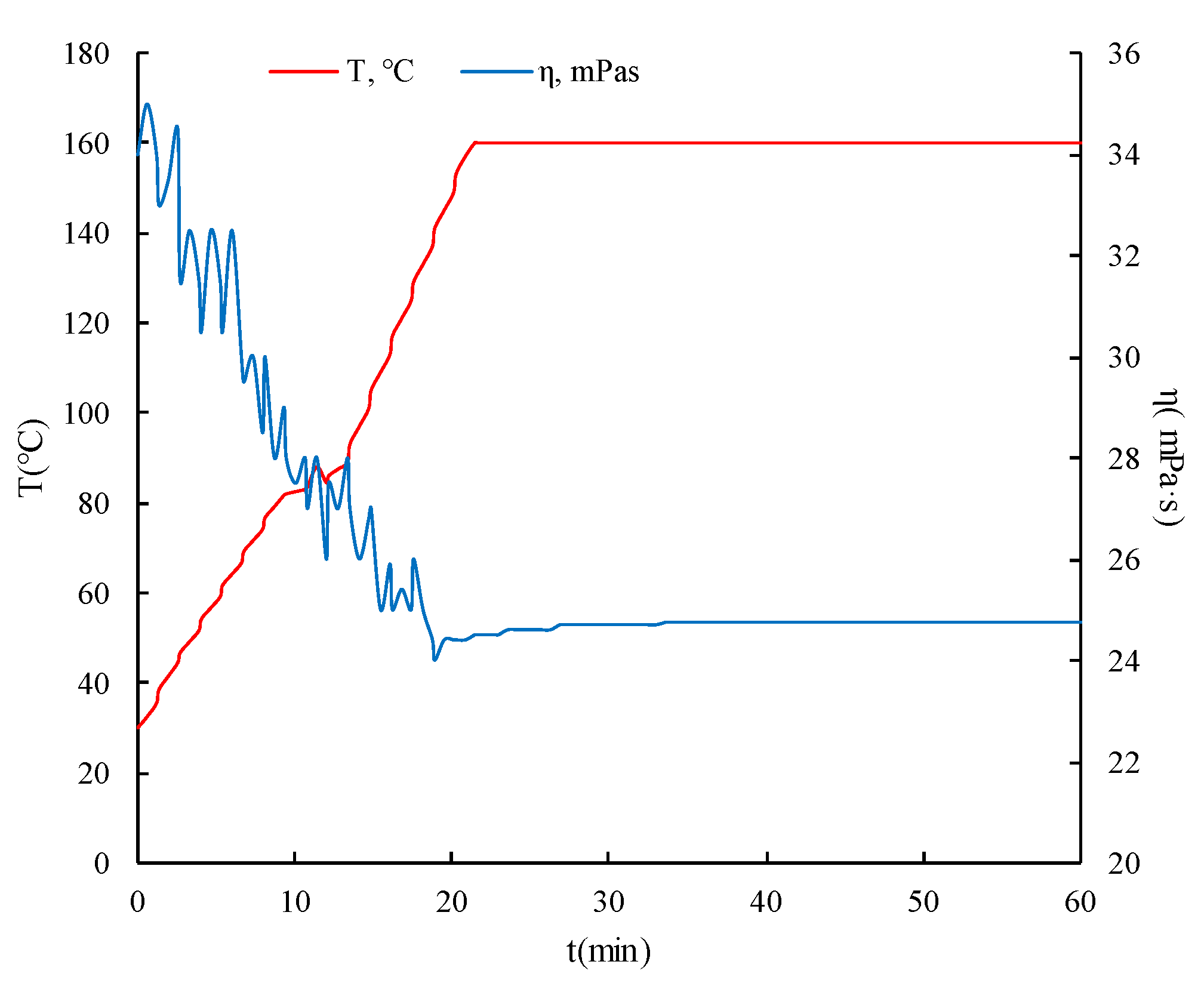




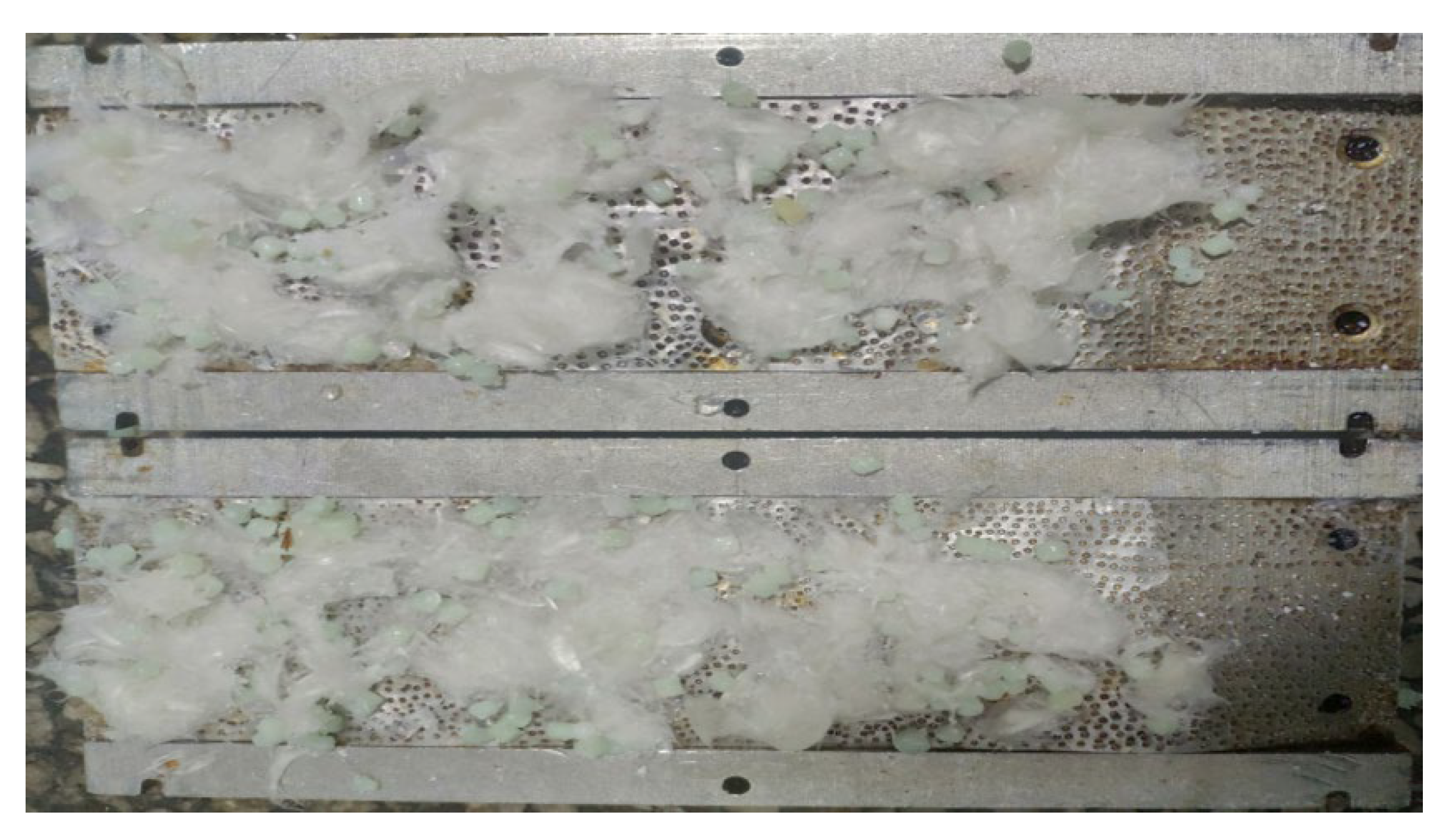




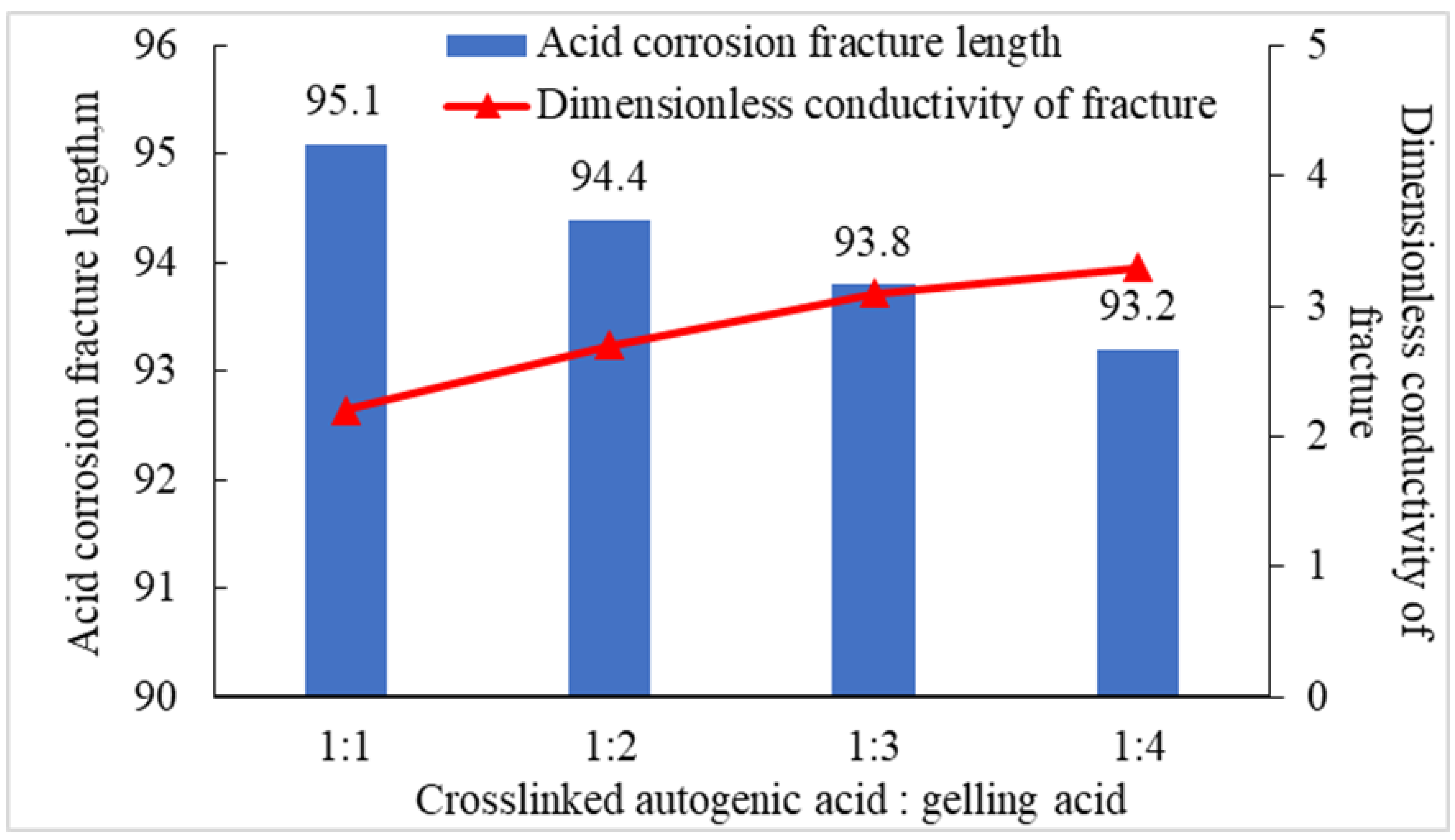

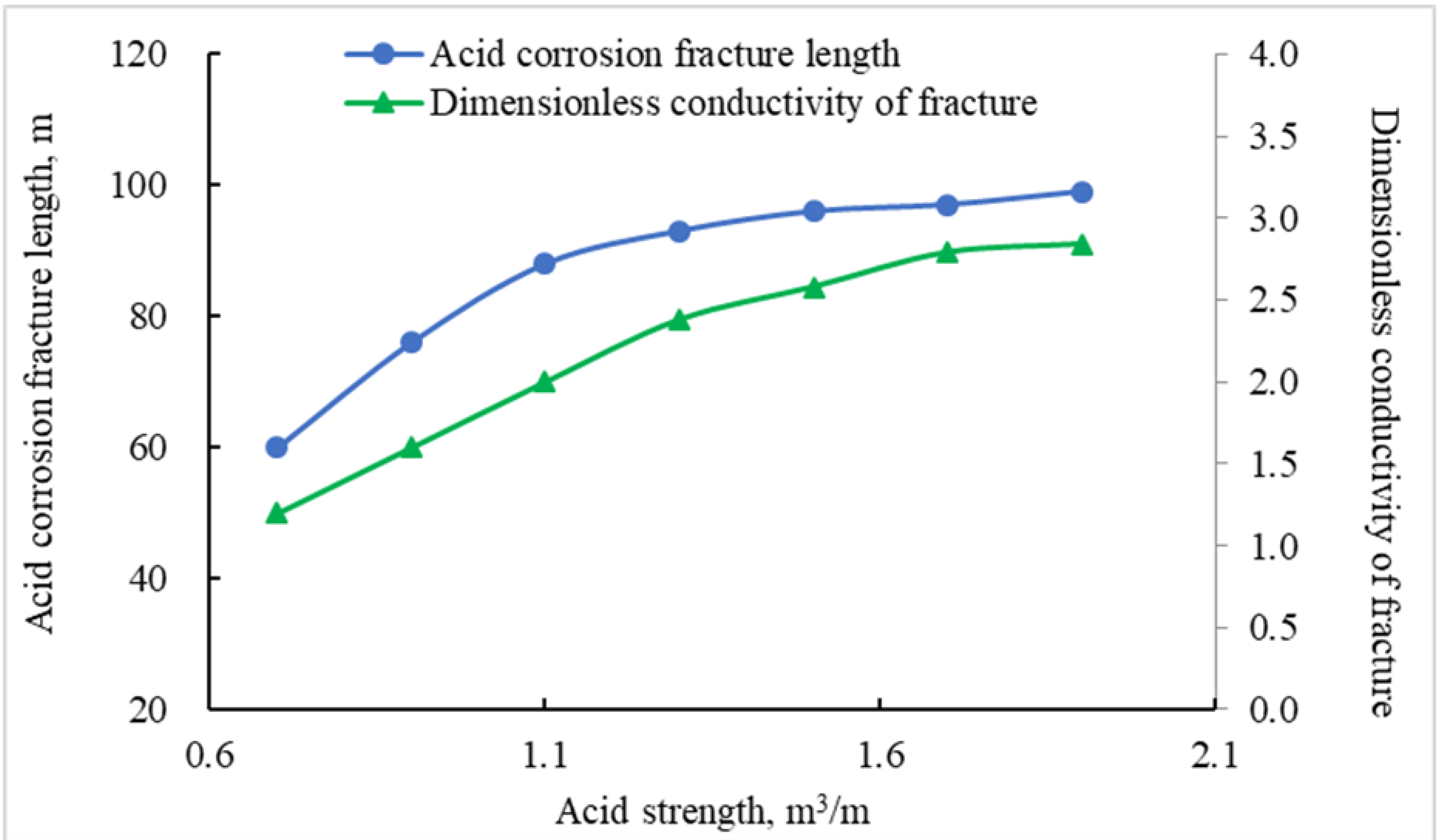
| Grid side length (m) | 0.1 | Reservoir permeability (mD) | 0.308 |
| Model I-axis length (m) | 3000 | Gas saturation (%) | 86.2 |
| Model J-axis length (m) | 600 | Fracture conductivity (D·cm) | 14 |
| Model K-axis length (m) | 12 | Rock compressibility | 3.9 × 10−7 |
| Reservoir porosity (%) | 3.12 | Formation pressure (MPa) | 98.2 |
| Experimental Sample | Dissolution Rate of Test Sample in 20% Hydrochloric Acid at 150 °C |
|---|---|
| Polyemulsion-modified polyvinyl alcohol resin | 3.54% |
| Urea methyl ester | 92.04% |
| Modified polyethylene glycol | 96.65% |
Publisher’s Note: MDPI stays neutral with regard to jurisdictional claims in published maps and institutional affiliations. |
© 2022 by the authors. Licensee MDPI, Basel, Switzerland. This article is an open access article distributed under the terms and conditions of the Creative Commons Attribution (CC BY) license (https://creativecommons.org/licenses/by/4.0/).
Share and Cite
Wang, Y.; Fan, Y.; Wang, T.; Ye, J.; Luo, Z. A New Compound Staged Gelling Acid Fracturing Method for Ultra-Deep Horizontal Wells. Gels 2022, 8, 449. https://doi.org/10.3390/gels8070449
Wang Y, Fan Y, Wang T, Ye J, Luo Z. A New Compound Staged Gelling Acid Fracturing Method for Ultra-Deep Horizontal Wells. Gels. 2022; 8(7):449. https://doi.org/10.3390/gels8070449
Chicago/Turabian StyleWang, Yang, Yu Fan, Tianyu Wang, Jiexiao Ye, and Zhifeng Luo. 2022. "A New Compound Staged Gelling Acid Fracturing Method for Ultra-Deep Horizontal Wells" Gels 8, no. 7: 449. https://doi.org/10.3390/gels8070449
APA StyleWang, Y., Fan, Y., Wang, T., Ye, J., & Luo, Z. (2022). A New Compound Staged Gelling Acid Fracturing Method for Ultra-Deep Horizontal Wells. Gels, 8(7), 449. https://doi.org/10.3390/gels8070449






